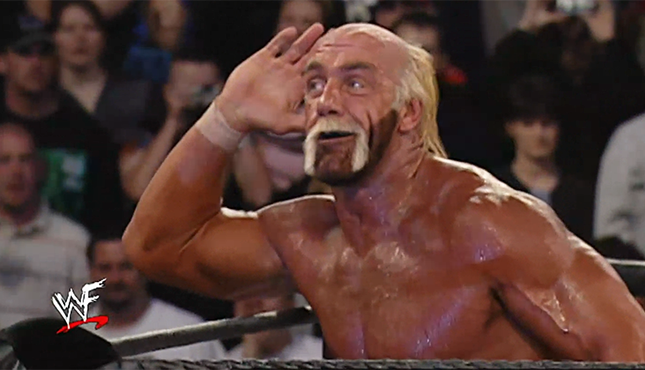In a recent episode of the podcast 83 Weeks, wrestling executive Eric Bischoff discussed the memorable moment when Hulk Hogan had his iconic mustache shaved off by The Dungeon of Doom. This event took place on the October 2, 1995 episode of WCW Monday Nitro, as part of the buildup to Hogan’s match against The Giant at Halloween Havoc.
The shaving of Hogan’s mustache marked a significant moment in wrestling history. Bischoff speculated on the motivation behind this decision, suggesting it was likely linked to an external opportunity rather than a purely wrestling-related storyline. “I’m not 100% sure, but I would bet a lot of money it had to do with a movie role or a commercial opportunity,” he said. He emphasized that it was unlikely Hogan would have made such a drastic change for a storyline without a compelling reason.
Bischoff elaborated further, indicating that there was likely an agenda tied to this creative decision that did not center on wrestling. He noted, “There was either a commercial role, a TV role, or something to that effect.” This suggests that Hogan’s decision to shave his mustache may have been influenced by factors outside of his wrestling career.
The timing of the mustache shave appears to have been somewhat rushed. Bischoff remarked, “If that would have been a discussion that happened four weeks in advance, or six weeks in advance, and you build a story around it, it would have been so much better.” Instead, he speculated that the decision was made shortly before the episode aired, possibly just days prior. “He probably got a phone call from his agent, and there’s going to be an audition on Wednesday, so what can we do? ‘Gonna have to shave your mustache off anyway. Let’s work it into a storyline,’” Bischoff explained.
This unexpected move not only changed Hogan’s appearance but also marked a unique crossover between his wrestling persona and his ventures in film. Following the mustache shave, Hogan appeared without it in the 1996 movie Santa with Muscles, further indicating the likely influence of external commitments on his wrestling character.
The discussion provided fascinating insights into the interplay between personal branding and professional wrestling, highlighting how external opportunities can shape in-ring narratives. Bischoff’s comments on this pivotal moment in Hogan’s career underscore the complexities of the wrestling industry, where storylines often intersect with actors’ personal and professional lives.
